Good morning and welcome back to another edition of Games with Coffee!
Today, I’m talking about a game that’s both close to my heart and one of my favourites for the original PlayStation (PS1) era – Alundra! It’s an underrated gem that’s similar to Nintendo’s Legend of Zelda, but with tougher puzzles to solve, lots of platforming elements and a great story with a compelling cast of characters that focuses on humanity, religion and the power of dreams.
I was introduced to the game back in 1998, in the sixth grade. I rented it at the same place where I rented Final Fantasy VII for the first time and I was surprised at the open, vibrant world and the quirky cast of characters that occupied the modern-looking village of Inoa. The game was much more challenging that I realized; the puzzles required a lot of thought to figure out and I needed to read the clues a couple of times until I could figure out the correct solution. One memorable puzzle in a crypt required me to speak to five spirits in a particular order. It stumped me, even after my rental period ended. Determined to solve the puzzle, I was led to a site called GameFAQs.com (formerly known in 1998 as gamesages.com and currently bought over by Gamespot) where I took a post-it note and wrote down the sequence: 3, 2, 4, 1, 5. That post-it note sat on my bedroom mirror for roughly 7 years until I eventually lost it.
This game had such an impact on me that I used it as a premise for (yet another) fanfiction-turned-creative writing assignment. I should mention that this particular assignment was part of a standardized test given to all Ontario students in the sixth grade. Needless to say, I bombed spectacularly. It was a terrible piece of writing (I think I threw in a spatula or something… I don’t know why), but I still had lots fun with it.
After the rental place shut down in the beginning of the 21st century, I was certain that I lost the opportunity to complete the game. While I spotted it in some niche gaming stores here and there, I didn’t have the money to pick it up for myself (I was but a somewhat humble, yet very broke high school student at the time).
All that changed when I got my PS3 and saw it was on the PlayStation Network, over a decade later. I instantly snatched it up, intent on finishing what I started. After getting past the crypt dungeon, I had discovered that the world Alundra and company inhabited was much darker than I realized. And once I finished it, I felt that I stumbled upon a masterpiece that was on par with games like The Legend of Zelda.
But questions remain here in 2018, what with the release of blockbuster games like God of War and other similar adventure games made by indie developers: does this feeling still hold true? Can this game be considered a masterpiece almost 20 years after its initial release? Top up your brew because I will attempt to answer these in the Espresso Shot Review:
Background
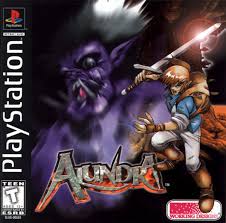
Alundra was developed by Matrix Software and published in North America by Working Designs. Matrix Software, established in July of 1994, was partially made up of former employees of another developer called Climax Entertainment. This point is important to make, as Alundra itself is considered a spiritual successor to a little-known Sega Genesis Action/Adventure game made by Climax called Landstalker. Landstalker’s isometric views, multi-leveled platforming and puzzle mechanics and storyline were the blueprints that gave Alundra life, although the isometric view were ditched for the more traditional top-down view.
Matrix Software, in particular, is well known developing remade ports of the Final Fantasy series, starting in 2006 with the Nintendo DS remake of Final Fantasy III. It’s interesting to note that while they made their start in the action-adventure genre, they ended up developing ports for popular, classic RPG’s. Alundra was the company’s very first game, which took the better part of three years to develop and was released in Japan on April 11, 1997 and in North America on December 31, 1997.
Story
Alundra tells the story of the titular adventurer travelling to Inoa Village, in the land of Torla. He is summoned there at the behest of a mysterious figure who appeared in his dreams, begging him to help the residents overcome a malevolent force. While en-route to Torla, a sudden, violent storm scuttles the ship he’s travelling on, leaving many individuals dead and Alundra on the Torlan coastline, unconscious.
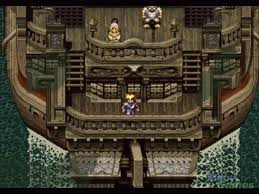
He is found and nursed back to health by Jess, Inoa’s resident blacksmith and a good-natured man, who fills him in on the situation. Since the King forbade the worshiping of idols some five years ago, the people of the land had lost their ability to create. In return, they found that they had the ability to control their dreams. Soon enough, those dreams warped into twisted and horrifying nightmares whose effects manifest in the waking world, affecting the villagers in a myriad number of ways. One resident – Nadia – causes explosions when they sleep, so she is forced to stay awake, losing her sanity all the while. A child named Sybil has prophetic dreams of the future while awake and she shares these with Alundra, giving him clues as to what he should expect from his journey.
Soon after Alundra is rescued by Jess, an elderly resident of Inoa – Wendel – is stricken with a nightmare. Alundra is then introduced to Septimus, a scholar who relocated to the village to investigate the nightmares. After travelling to the scholar’s teacher’s house near the village and obtaining a tome for Septimus, Alundra learns of his true heritage – that he is a Dreamwalker of the Elna Clan, gifted with the ability to enter and influence people’s dreams, most times for the better. Using that power, Alundra starts to defeat the demons that haunt the villagers nightmares. However, despite his valiant efforts, some villagers still end up dying.
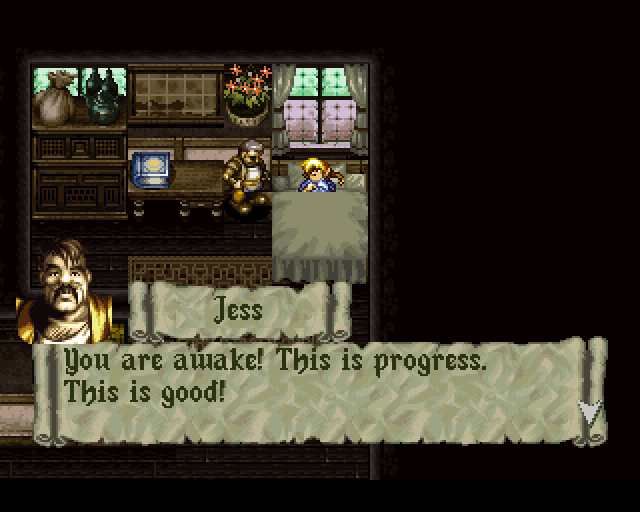
It isn’t until after the first few villagers pass away that Alundra finally meets the mysterious figure he saw in his recurring dreams. The figure introduces himself as Lars, who tells him that his true enemy is a being named Melzas – a demon who desires humanity’s destruction. Despite being sealed up in a lakeside palace by Lars and six others, he can still influence and control people through dreams and worship. Lars instructs Alundra to gather the seven crests held by the guardians that keep the seal of the palace intact, enter it and destroy Melzas once and for all before he truly awakens and brings ruin to all.
However, it appeared that Melzas was a few steps ahead of the Guardians before Alundra arrived. The demon employed the white-haired monkeys known as the Murgg to infiltrate and steal the crests, thus hastening Melzas’ reawakening. As the plot starts to thicken, the Murgg have managed to steal two of the seven, meaning that Alundra would have to work double time to hunt down the remaining five and find a way to regain the two that were stolen.
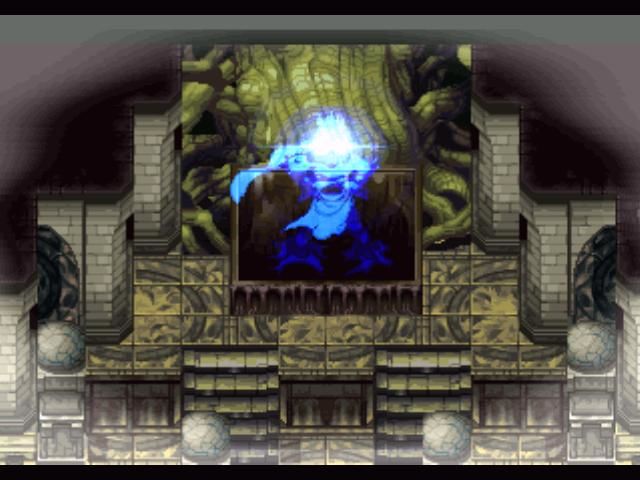
Midway through the game, another Dreamwalker named Meia arrives in the village. Initially cold towards her fellow clanmate, she warms up to him after he learns of her tragic past and actively assists him in saving the villagers from Melzas. She’s also a great foil for Septimus; her sardonic outlook on life counters that of the scholar’s eternal optimism and makes for interesting conversation.

The story makes many dark turns as it progresses and the game is not afraid to kill off the odd character or two. Some deaths were shocking to behold, specifically, those where a child and a character central to the plot were murdered. The villagers are affected greatly by these deaths, their conversations changing as the game progresses, up to the point where they become despondent enough to place the blame solely on Alundra. Although it’s not without some influence.
Enter the priest Ronan. Religion plays an important role in the game, in that the priest and his disciple, Gilles, are highly circumspect of Alundra and his miraculous dreamwalking powers. He preaches to the villagers to reject the notion that Alundra is a savior and instead reaffirm their faith to their god, which the player eventually learns is Melzas himself. Through Ronan, Melzas attempts to discredit Alundra and turn the villagers against him by pointing out that those he attempts to save usually end up dead and that everything was fine until he showed up. Ronan’s descent into madness and fevered devotion to his false god are what makes him both so reviled and so interesting as a character. He’s killed innocent people to satisfy the status quo, rejects all notions that his faith is so badly skewed and truly believes in Melzas’ twisted message of salvation, so much so that he’s willing to sacrifice his own humanity for that cause. He makes for a very interesting villain.
One last note in this section: the English translation of the game’s script is incredibly quirky and entertaining to read. Characters exude plenty of charm and some of the things they say are hilarious to behold.
Gameplay
Alundra is an action/adventure platforming game displayed from a top-down perspective, similar to the The Legend of Zelda games. The character can move in all directions, jump, attack with a weapon, execute a dash and shoulder charge and use equipped items, like recovery herbs, bombs and capes and magic items.
Platforming in this game can be an exercise in patience since it’s sometimes difficult to judge both how far Alundra can jump and the distance between platforms themselves. To add to that, platforms can be hidden behind objects or backgrounds, meaning that the player must investigate every nook and cranny to advance. One area in particular that frustrated me to no end was an underwater section, where the water physics affected the timing and length of my jumps. I would over or underestimate the length and timing of my jump to the next platform and fall to the bottom level, where I had to maneuver through a maze to find a bubble to get back to the upper floor in order to try again.
Two things make this game stand out. The first being the fiendishly difficult puzzles. There is an enormous variety of puzzles to solve in this game, including pushing ice blocks, stepping on or flipping switches in a particular order or arranging items in a certain order. Many puzzles require close reading of the clues in order to solve, such as the puzzle at the crypt entrance, where a spirit tells you to speak to five coloured spirits in order from most revered to least. Another example is stacking a set of symbol blocks in reverse order, which the clue mentions briefly. For the majority of the time, however, it’s a word or a phrase that is overlooked that’s the main cause of confusion for solving these puzzles. Some require a combination of timing and thinking outside of the box to solve as well and some solutions, especially in the final dungeon, span multiple rooms and may require solving smaller sub-puzzles to advance further. I’ll be honest, I needed a guide at some point to solve some of these.
The second is the amazing dungeon design, especially the Dream Dungeons. Each of these dungeons are specific to the character affected and alters the dungeon mechanics to reflect that character’s personality. Take for instance Elene, who suffers from disassociative identity disorder or multiple personalities. Her Dream Dungeon is actually four mini-dungeons that reflect the four personalities Elene possesses. Another great example are the identical twins, Nestus and Bergus, whose connection to one another allows Alundra to travel between both brothers via their dreams. This reflects on their dream dungeon, where everything is a mirror image of each other! It’s quite well done.
There are three collectibles, of which two are vital to your quest. They are the Life Vessels and Magic Seeds. Life Vessels permanently add a point of health to Alundra’s HP, which maxes out at 50 HP. The Magic Seeds increase Alundra’s magic ammunition, to a maximum of four uses. Gilded Falcons are optional collectibles, but they allow Alundra to access special items and additional Life Vessels once you’ve obtained enough throughout the game.
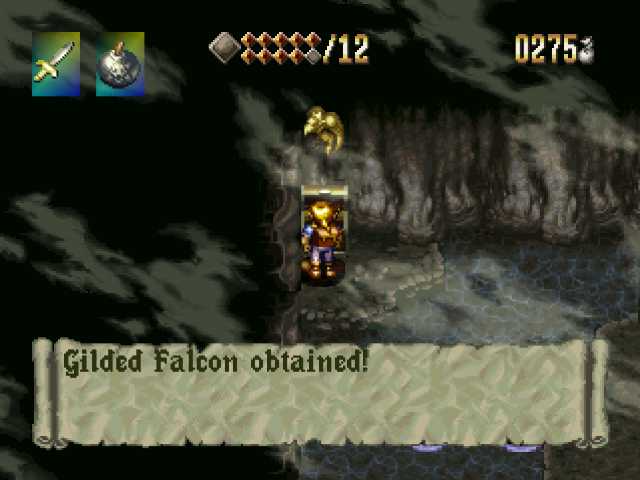
One complaint I have is that some areas become inaccessible later on in the game, meaning that constant exploration is needed to avoid missing collectibles, like Gilded Falcons and Life Vessels. This is especially apparent in the Dream Dungeons, since you can’t reenter a dream once it’s over. It’s an annoyance, albeit a minor one really.

Alundra has access to a variety of weapons, each required to accomplish a certain action. Along with his sword, he also uses a Flail to break blocks, a Crossbow to activate switches from long range and the Fire and Ice Wands to both solve puzzles and deal elemental damage. The Sword and the Fire and Ice Wands all have access to a charge attack when you get them (Alundra starts with a dagger with no charge attack), while charged attacks for the Flail and Crossbow are obtainable once you pick up their upgrades. Alundra also has access to spells of the four elements: Fire, Water, Earth and Wind. Each spell can be upgraded (from scroll to book) and they’re ridiculously powerful, to the point where they’re game-breaking.
There is also a secret, incredibly powerful sword called the Legendary Sword that can only be obtained if the player dies multiple amounts of times. This is akin to an easy mode combat-wise, because it one-shots virtually every enemy and makes Alundra absolutely unstoppable. Getting the sword does not make the puzzles any easier, I’m afraid.
Alundra also has access to armor, which reduces the damage he takes from enemies. He starts with basic cloth armor and can obtain upgrades as the story progresses. His boots are also upgradable; each new pair increases his jumping ability, grants him the ability to swim and allows easier travel through difficult terrain, like sand and shallow water. Two of these are required to complete the game while the final and ultimate version of the boots is a missable item.
There are a lot of enemies in the game. One thing I’ve noticed is how much endurance even the simplest of foes have. The Pukas and Slimes (similar to the Zols in the Zelda games) basically take five hits to beat at the start of the game and they’re found all over the land. There are ogre-like warriors called Gragg, monkey warriors named Murgg, mud golems, reapers, Lizardmen, Evil Trees, Mummy Guardians, you name it. Some of the most interesting monsters are found initially in the Nightmare dungeons, like Soul Devourers; odd, Lovecraftian monsters with tentacle-like appendages that extend from their abdomens and that can teleport all over a stage.
I find that some enemies, like the Sand Worms and the Bug Bags, are supremely annoying to deal with or hard hitting for the stage of the game that you fight them in. Sand Worms make an annoying squelching sound whenever they appear and disappear, which aggravates me to no end. Furthermore, once hit, the worms immediately enter the ground again. Bug Bags can surround you, take off a chunk of health and they can absorb a large beating before dying off. Plus, they leave behind residual bugs that do contact damage once defeated, which only adds to their annoyance factor. Lizardmen are also tough fighters to attack and defend against; they are quick with their shields and have a powerful dashing attack, which makes for a challenging set of foes.
The first two or three bosses are not very impressive to start with. This changes after the Coastal Caves – the boss here is an water demon with various area-of-effect attacks and is a challenge to defeat. Subsequent bosses afterwards require certain strategies to defeat. The Giant, Nirude, is an interesting fight in that you don’t fight at all; you have to survive his onslaught long enough to prove your worth. My only gripe is the last few bosses in the game. Apparently, because your weapons at the later stages of the game are so powerful, the game’s designers nerfed their effectiveness against some of the late game bosses, including Melzas. Regardless of what weapon you use at that stage, it will take roughly 30 to 60 hits to defeat these powerful foes. Magic is an exception in that they are much more effective than standard weaponry alone.
Visuals
Alundra is a very pretty game to watch. At the time of its release, 2-D graphics were slowly on the outs, replaced by flashier (and blockier) 3-D polygonal models. It’s in the present time however, with the resurgence of retro graphics in indie releases, that Alundra’s visuals really shine forth. The level of detail and polish on the sprites and backgrounds are stunning; shadows, colours, textures effects and the like really brings the fantasy elements of the story to life. They are charming to look at.
I really liked the design of Inoa Village: It has a nice, modern look to it and it appears like a pleasant village to stay in, despite the fact that the residents are plagued with violent nightmares. It somewhat reminds me of Kakariko Village in Breath of the Wild, minus the Asian influence.
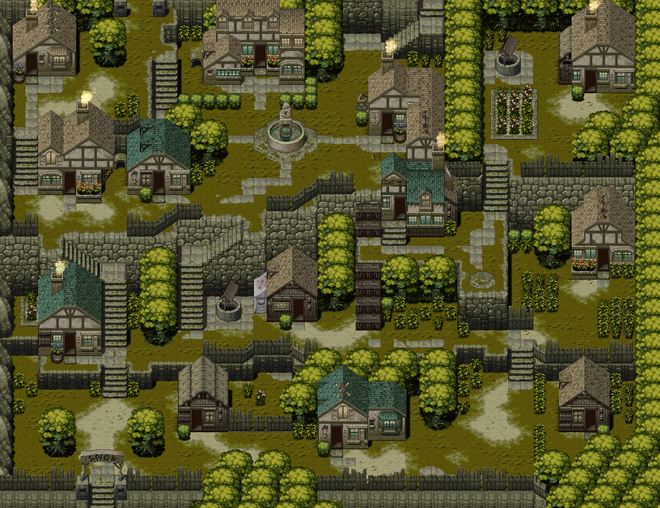
Visually speaking, Alundra is a red-headed version of Link, elf ears and all. The only differences are that he doesn’t wear a hat or green clothes and that he can jump. Nevertheless, Alundra’s animations and actions look very smooth.
The only complaint I have is in regards to the platforms. Alundra’s visuals sometimes makes it difficult to gauge your distance between platforms; you’re either over or underestimating the distance between ledges, pillars and overhangs. In any case, it’s only a minor annoyance.
Enemies also look visually appealing, in the sense that they look tough and intimidating. The bosses from the Coastal Cave and beyond are also particularly impressive looking. The bosses in some of the Nightmare dungeons are truly terrifying, including one that attempts to suck you into its gaping stomach like a grotesque version of Kirby.
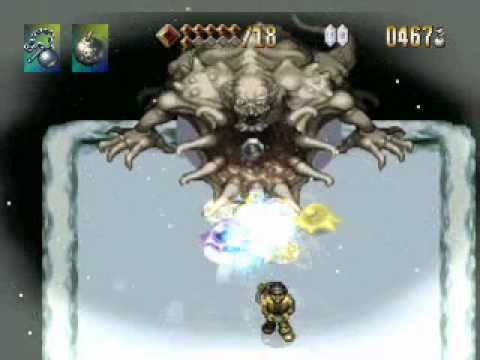
Audio
I personally adore Alundra’s soundtrack. The theme for Inoa Village is one that stuck with me for years before I replayed the game and is one of my favourite tracks. It’s upbeat and catchy nature juxtaposes against the despair of the villagers, creating an interesting contrast.
The Wind That Shook The Earth is Alundra’s overworld music. It really captures the spirit of adventure and exploration, in that it’s powerful and epic and has the propensity of making me smile whenever I hear it. I honestly can’t get bored of listening to this song.
Alundra also has some great dungeon music. The House of Tarn, which you hear in a couple of dungeons, is a tense and mystery-filled piece that makes me feel like there’s something lurking in the dark corners of the dungeon. The generic Nightmare dream dungeon music really reflects the nightmarish feeling that Alundra encounters when he enter’s the villager’s dreams.
My personal favourite song in the game is the first one you hear when you start a new game: the track that plays when you’re on the ship, heading for Torla. It really makes one feel that they are travelling to a foreign land and starting a brand new journey. I love it.
The SFX in the game are also pretty good and remind me strongly of The Legend of Zelda, specifically Ocarina of Time.
Replayability
This game is pretty long, clocking in at over 20 or so hours of solid gameplay, possibly 25 if you’re a first time player thanks to the brutally difficult puzzles. After beating Melzas, there’s not much to do post-game – you could try your luck in the secret casino area? That’s assuming you picked up the Secret Pass in Inoa Village. You could try your hand at hunting down all 50 Gilded Falcons (Good luck with that…) and trade them in to get an extra special item that virtually makes you all but invincible. I’d play this game again and again because of how great this story is, but that’s my personal opinion. (To date, I’ve replayed it about six times now – I’m currently in the middle of a playthrough as I speak!)
The Last Drop
Pros:
- Beautiful visuals and sprite art.
- Interesting and intelligent dungeon design.
- Quirky characters and a great story.
- Open world exploration with lots of hidden secrets and collectibles.
- Soundtrack is well done.
- Boss fights are challenging and engaging.
Cons:
- Brutally difficult puzzles, some which may require a guide to solve.
- Developers nerfed the damage done to some of the end game bosses since Alundra is incredibly powerful at that point of the game.
- Platforming can be tricky and frustrating at times.
- Some enemies can be downright annoying to deal with (eg: Sand Worms, Bug Bags, Lizardmen, etc.).
- Lots of missable items that requires paying close attention to detail in dungeons and/or backtracking throughout the land at every opportunity.
Alundra is truly one of the PlayStations’s Hidden Gems; a game that you come across at random, but yet leaves a lasting impression on you after you play it. Even though the puzzles and platforming elements can be on the difficult side at time, it’s story, combat, open world and quirky dialogue more than make up for it. If you’re a fan of open world adventure games or of the Legend of Zelda, this game is definitely for you!
4.5/5



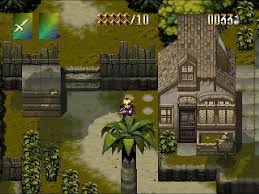
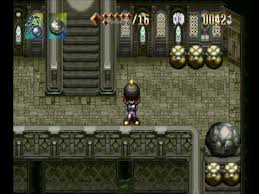
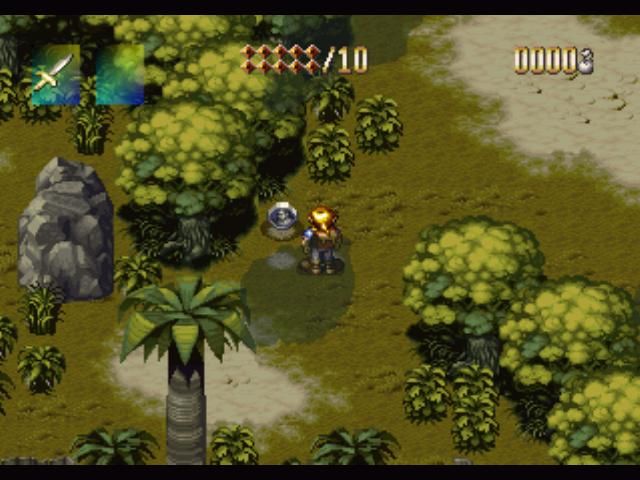


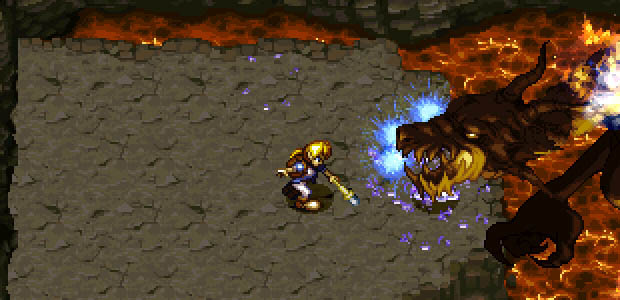
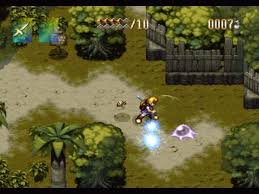

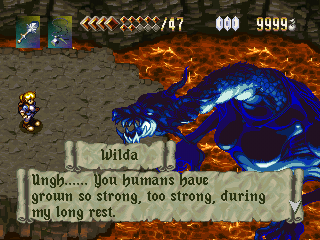
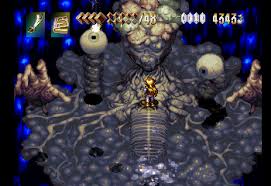
This is such a great game; one of my favourites from the PS1 era. I feel it went a bit underappreciated back in the day — primarily due to, as you describe, 2D art being less fashionable in favour of the new and shiny 3D — but it’s definitely getting lots of love today.
Will have to revisit my own copy sometime. Pretty sure I actually still have my original disc!
LikeLiked by 1 person
Awesome! As I recall, there was a very limited production of game discs on its release, so you’re one of the lucky few that have the original copy! I’m slightly jealous!
LikeLiked by 1 person
Love Alundra. Love Matrix. Great review!
LikeLiked by 1 person
Thanks!
LikeLike
Never played Alundra, but actually had Alundra 2. I was a kid so I didn’t understand much of story anyways, so why bother getting the first one?
All I remember is how wacky the voice acting was (I can still hear the pirate boss screaming “Mephiiistooo?”), how cool it was to solve a puzzle with an element thing, and the betting on bull fights. Oh and the bosses were cool.
But I got stuck in one of the puzzles and never finished it. I also guess it wasn’t as good as I remember since Playstation doesn’t deem it worthy of being sold in their store.
If you have a chance to play it, let me know how it stands the test of time, and especially compared its predecessor you so love.
LikeLiked by 1 person
Well, Alundra 2 is less of a sequel to the original game and more a completely different game that had the Alundra name slapped on for sales. I’ve only read of it and not played it. I should give it a chance, but I feel that it’ll be vastly inferior to Alundra 1…
LikeLiked by 1 person
Pingback: A Year in Review [2018] | Games With Coffee
Pingback: “Cause and Effect Ratio: A Nightmare on Elm Street 3: Dream Warriors (1987) and Alundra (1997)” – The Well-Red Mage